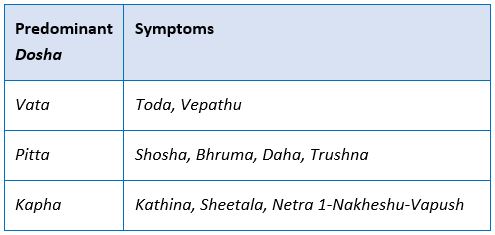Kushtha in Ayurveda a comprehensive study
DOI:
https://doi.org/10.21760/jaims.9.10.30Keywords:
Viruddha Aahara Janya Vyadhi, Maha Kushtha, Kshudra KushthaAbstract
The skin is the most visible and presentable part of the body, playing a significant role in one’s personality. It acts as a mirror, reflecting internal health conditions. As the largest organ of the body, the skin covers a surface area of about 1.8 square meters and accounts for approximately 18% of total body weight. Skin diseases, while manifesting physically, often lead to significant psychological distress, causing discomfort, disfigurement, disability, and in some cases, even death. Changes in skin color are frequently indicative of homeostatic imbalances within the body. The health of the skin is influenced by a variety of interrelated factors, including nutrition, hygiene, circulation, age, immunity, genetic predispositions, psychological state, and medication use. In modern society, the prevalence of fast food consumption and irregular sleep patterns has contributed to the emergence of "Viruddha Aahara Janya Vyadhi," or diseases caused by incompatible dietary habits. As a result, a significant portion of the population experiences skin problems. The skin is considered a combination of the five great elements (Pancha Mahabhutas), with Vayu (air) being the most significant. Sparsh Pareeksha (examination by touch) is also included as one of the eight diagnostic tools in Ashtavidha Pareeksha. Common skin conditions like eczema, acne, blisters, melanoma, age spots, and pemphigus are discussed under the broader category of Kushtha in Ayurvedic literature. All forms of Kushtha are classified into two categories: Maha Kushthas (major skin diseases) and Kshudra Kushthas (minor skin diseases).
Downloads
References
Shri Amar sinha, Amarkosha, Edited with "Dhans' hindi valen by Shri Mannalal Abhimanyu Edition 1995 Dvidya Kanda Manushya Verga, shloka no.51, 132
Ashtanga Hrdayam, Nidana Sthana, 14/3-4, Vidyotini Hindi Commentary By Atridev Gupta, Chaukhambha Prakashan, pp 369
Agnivesha, Charak Samhita, Charaka and Dridbaala with the Ayurveda- Dipika Commentary of Chakarapanidatta, Edition by Vaidhya jadavaji Trikamji Acharya Chaukhmbha bharti academy Varanasi, reprint 2007. Chikitsa sthan, chapter 7, Shloka no.4-8, page no. 450.
Sushruta, Sushruta Samhita, edition by Ayuveda tattva sandipika Hindi commentary, by Kaviraja ambikadutta shastri, part 1st, Chaukhmbha Sanskrit sansthan, Varanasi, reprint 2018. Nidan sthan, chapter 5th. Shloka no. 3, page no. 319.
Vagabhata, Astanga hridyam, edition with the vidyotini Hindi commentary by Kaviraja atrideva gupta, Chaukhambha prakasan, Varanasi, reprint 2019. Nidan sthan, chapter 14th, Shloka no. 1-3, page no. 369.
Agnivesha, Charak Samhita, Charaka and Dridbaala with the Ayurveda- Dipika Commentary of Chakarapanidatta, Edition by Vaidhya Jadavaji Trikamji Acharya Chaukhmbha bharti academy Varanasi, reprint 2007. Chikitsa sthan, chapter 7, Shloka no.9, page no. 450.
Bhela Samhita, Eng, translation, Dr. K.H.Krishnamurty and P.V.Sharma, Chaukhambha Visvabharati, Varanasi, reprint 2008.Chikitsha sthan, chapter 6th. Shloka 3, page no.327
Agnivesha, Charaka Samhita, revised by Charaka & Dridhabala with Elaborated vidyotini hindi commentary by Pt. Kashinath shastri, Gorakhanath Chaturvedi. Nidautham 114 pg no. 542 Bion 2000 Chaskhanitha Bharati Mondey, Varanasi
Madhavakar, Madhava Nidan, "Madunha hindi commentary by Narendra Nath Shastri published by Motilal Banarasidas Edition sh. 49/10-22 pg no.623-425
Sri Dalhanacharya, Nibandha sangraha commentary on Nidanasthana edited by Vaidhya Yadavaji Trikamji Acharya rest by Narayana Rant
Vriddha Jivaka, Kashyapa Samhita, revised by Vatsya with Sanskrit I introduction by Pandit Hemaraj Sharma with Vidyotini Hindi commentary and Hindi translation of Sanskrit introduction by Ayurvedalankar shri satyapala bhishagacharya, published by Chaukhambha publication, New Delhi, Edition 2010, year of reprint 2010, Sutrasthana 27/55, pg no.45.
Sushrut. Shushrut Samhita, Ambika dutta shastri, Editor reprint 2020. Chaukhambha Sanskrit Sansthan Varanasi; 2008, Nidansthan 5/5 pg no. 320
Sushrut. Shushrut Samhita, Ambika dutta shastri, Editor reprint 2020. Chaukhambha Sanskrit Sansthan Varanasi; 2008, Sutrasthan33/4 pg no. 163














